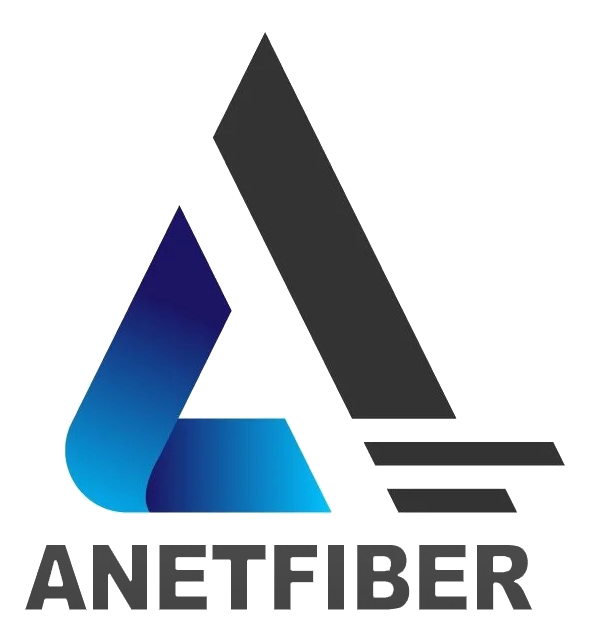Implementing Fiber Optic Health Monitoring Systems for Environmental Sensing

Exploring the Basics of Fiber Optic Health Monitoring Systems
Understanding Fiber Optic Technology
Fiber optic technology is a revolutionary method of transmitting information using light. The science behind fiber optics involves the transmission of data through optical fibers, which are thin, flexible, and made of glass or plastic. These fibers work on the principle of total internal reflection, where light is transmitted through the core of the fiber by constantly reflecting off its walls. This technology enables the transfer of data over long distances at high speeds, making it ideal for various applications, including health monitoring.
The question arises: Why choose fiber optics for health monitoring? The answer lies in the unique properties of fiber optic systems. Fiber optic cables are not susceptible to electromagnetic interference, making them highly reliable for transmitting sensitive health data. Additionally, they are lightweight, compact, and can be easily integrated into wearable health monitoring devices, providing a seamless and unobtrusive experience for patients.
Key Components of Fiber Optic Health Monitoring Systems
Sensors and their roles
Central to fiber optic health monitoring systems are specialized sensors that utilize fiber optic technology to measure vital health parameters. These sensors can detect a wide range of physiological indicators such as heart rate, blood pressure, oxygen saturation levels, and body temperature with exceptional accuracy. By leveraging the principles of light transmission and reflection within optical fibers, these sensors ensure precise and real-time monitoring of an individual's health status.
Data analysis and interpretation
In addition to sensor technology, effective data analysis and interpretation play a crucial role in maximizing the potential of fiber optic health monitoring systems. Advanced algorithms process the raw data collected by fiber optic sensors to provide meaningful insights into an individual's health condition. This analytical approach enables healthcare professionals to identify trends, anomalies, and early warning signs, empowering them to make informed decisions regarding patient care.
The Role of Fiber Optic Sensors in Healthcare
Fiber optic sensors play a pivotal role in revolutionizing healthcare by providing advanced monitoring solutions that cater to the evolving needs of patients and healthcare professionals. Let's delve into the multifaceted contributions of fiber optic sensors in enhancing health monitoring systems and environmental sensing.
Enhancing Health Monitoring Solutions
Monitoring vital signs in real-time
One of the primary advantages of fiber optic sensors in healthcare is their ability to monitor vital signs in real-time. These sensors are designed to capture and transmit critical health data with remarkable accuracy, enabling continuous tracking of parameters such as heart rate, blood pressure, oxygen saturation levels, and body temperature. This real-time monitoring empowers medical professionals to promptly respond to any fluctuations or abnormalities, ensuring proactive and personalized patient care.
Improving patient care with accurate data
By leveraging fiber optic sensors, healthcare providers gain access to a wealth of accurate and reliable data essential for delivering high-quality patient care. The precision offered by these sensors facilitates early detection of health issues, allowing for timely interventions and tailored treatment plans. Moreover, the seamless integration of fiber optic technology into health monitoring devices enhances the overall patient experience by minimizing discomfort and maximizing mobility.
Fiber Optic Sensors in Environmental Sensing
Detecting environmental factors affecting health
Beyond individual health monitoring, fiber optic sensors also excel in environmental sensing, enabling the detection of external factors that impact overall well-being. These sensors can identify environmental elements such as air quality, temperature variations, and exposure to hazardous substances. By capturing this data in real-time, healthcare professionals can gain valuable insights into how environmental conditions influence patient health outcomes.
Case studies: Success stories in healthcare settings
Numerous success stories underscore the transformative impact of fiber optic sensors on healthcare practices. For instance, a hospital integrated advanced fiber optic sensor technology into its intensive care units to monitor patients' respiratory rates continuously. This proactive approach led to early identification of respiratory distress symptoms, resulting in reduced instances of adverse events and improved patient outcomes. Similarly, wearable fiber optic sensors have empowered individuals with chronic conditions to actively manage their health by providing actionable insights into their daily environment and lifestyle choices.
Advancements in Patient Monitoring Systems Through Fiber Optics
As technology continues to advance, the integration of fiber optic solutions has significantly transformed patient monitoring systems, ushering in a new era of healthcare capabilities.
Telemedicine with Fiber Optics
Bridging the gap in remote healthcare
The utilization of fiber optic technology has played a pivotal role in bridging geographical barriers and expanding access to healthcare through telemedicine. By leveraging high-speed data transmission capabilities, healthcare providers can establish seamless connections with patients in remote or underserved areas. This enables real-time consultations, remote diagnosis, and continuous monitoring, thereby ensuring that individuals receive timely medical attention regardless of their location.
Success stories of telemedicine implementations
Across diverse healthcare settings, success stories abound regarding the successful implementation of telemedicine empowered by fiber optic networks. In rural communities where access to specialized medical care is limited, telemedicine initiatives have facilitated virtual appointments with specialists located in urban centers. Patients have benefited from expert consultations and personalized care plans without enduring the burden of extensive travel. Furthermore, during public health crises or natural disasters, telemedicine supported by robust fiber optic infrastructure has proven instrumental in delivering essential healthcare services to affected populations.
Real-time Diagnostics and Remote Patient Monitoring
The impact of instant data on patient outcomes
Real-time diagnostics made possible through fiber optic systems have revolutionized patient outcomes by enabling swift and accurate assessments. Healthcare professionals can remotely access comprehensive patient data in real time, allowing for prompt decision-making and intervention. This instantaneous access to critical health information empowers medical teams to respond swiftly to emergent situations and provide timely guidance to patients irrespective of their physical location.
How remote monitoring is changing patient care
Remote patient monitoring facilitated by fiber optic technology has redefined the delivery of healthcare services by promoting proactive and personalized care. Patients with chronic conditions benefit from continuous monitoring without the need for frequent hospital visits. Through wearable devices equipped with fiber optic sensors, vital health parameters are continuously tracked and transmitted to healthcare providers. This proactive approach not only enhances disease management but also fosters a sense of empowerment among patients as they actively participate in their own well-being.
In addition to these advancements, ongoing research and development continue to drive innovation in fiber optic-based patient monitoring systems, promising further enhancements in healthcare delivery.
The Future of Healthcare Technology with Fiber Optic Solutions
As the healthcare landscape continues to evolve, the integration of Fiber Optic technology is poised to drive significant innovations in medical devices and telehealth solutions. These advancements hold the potential to revolutionize patient care, expand access to healthcare services, and shape future healthcare models.
Innovations in Fiber Optic Medical Devices
Upcoming trends in fiber optic healthcare devices
The realm of Fiber Optic medical devices is witnessing a surge of transformative innovations that are set to redefine health monitoring and diagnostics. Advanced Fiber Optic sensors embedded within wearable devices are paving the way for continuous and non-intrusive monitoring of vital health parameters. These devices leverage the inherent advantages of Fiber Optic technology, such as high data transmission speeds and immunity to electromagnetic interference, to deliver real-time insights into an individual's health status.
Moreover, ongoing research and development efforts are focused on enhancing the capabilities of Fiber Optic sensors to detect a broader spectrum of physiological indicators with unparalleled precision. This includes the exploration of novel applications in areas such as neuro-monitoring, metabolic profiling, and early detection of systemic abnormalities. By harnessing the potential of Fiber Optic medical devices, healthcare professionals can anticipate and address health concerns proactively, leading to improved patient outcomes and personalized treatment strategies.
The role of research and development
Research and development play a pivotal role in driving the evolution of Fiber Optic healthcare devices. Collaborative endeavors between industry leaders, academic institutions, and healthcare practitioners are instrumental in exploring new frontiers for Fiber Optic technology in medical applications. These initiatives encompass interdisciplinary studies that converge photonics, material science, biomedical engineering, and data analytics to propel the development of next-generation Fiber Optic medical devices.
Furthermore, investments in R&D foster continuous refinement of sensor technologies, data processing algorithms, and device miniaturization techniques. This concerted effort aims to enhance the sensitivity, specificity, and reliability of Fiber Optic sensors while optimizing their form factors for seamless integration into diverse healthcare settings. As a result, these advancements hold promise for empowering clinicians with comprehensive health insights derived from advanced Fiber Optic systems.
Telehealth Solutions and Their Impact
Expanding access to healthcare services
Telehealth solutions empowered by Fiber Optics are instrumental in overcoming geographical barriers and extending medical care beyond traditional clinical environments. The high-speed data transmission capabilities inherent in Fiber Optic networks enable seamless connectivity between patients and healthcare providers irrespective of their physical locations. This facilitates virtual consultations, remote diagnosis, continuous monitoring, and timely interventions without necessitating in-person visits.
Moreover,** Fiber optic-based telehealth solutions hold immense potential for reaching underserved populations residing in remote or rural areas where access to specialized medical services is limited. By leveraging these solutions**, individuals can benefit from expert medical guidance without enduring logistical challenges associated with travel or long waiting times for appointments.
The role of fiber optics in future healthcare models
The integration of **fiber optic technology into telehealth solutions is poised to reshape future healthcare models by fostering a paradigm shift towards patient-centric care delivery. These solutions facilitate proactive engagement with patients through remote monitoring mechanisms enabled by advanced fiber optic sensors embedded within wearable health monitoring devices.
Furthermore,** fiber optic-enabled telehealth platforms empower individuals with chronic conditions by providing them with continuous support**, personalized care plans based on real-time health data insights**, thereby promoting self-management strategies that enhance overall well-being.
My Experience with Fiber Optic Health Monitoring
Throughout my journey with fiber optic health monitoring, I have gained invaluable insights into the transformative potential of this cutting-edge technology. The impact of fiber optic systems on my health monitoring experience has been profound, shaping my perspective on personalized care and proactive well-being management.
Personal Insights into Health Monitoring Systems
The integration of fiber optic technology into my health monitoring regimen has revolutionized the way I perceive and manage my well-being. The seamless incorporation of fiber optic sensors in healthcare devices has empowered me to gain real-time access to crucial health data, enabling a deeper understanding of my physiological indicators. By leveraging the capabilities of fiber optic systems, I have experienced a heightened sense of control over my health, allowing for timely interventions and informed decision-making.
How fiber optic technology has impacted my health monitoring
The utilization of Fiber Optic systems has provided me with continuous and accurate insights into vital health parameters such as heart rate, blood pressure, and oxygen saturation levels. This real-time monitoring capability has been instrumental in detecting subtle fluctuations and trends in my health status, fostering a proactive approach to well-being management. The precision and reliability offered by Fiber Optic sensors in healthcare have instilled confidence in the accuracy of the data obtained, empowering me to make informed lifestyle adjustments based on actionable insights.
Lessons learned and advice for future implementations
Through my experience with Fiber Optic health monitoring, I have learned the significance of embracing technological advancements in personalized care. It is essential to remain open to innovative solutions that enhance the quality and depth of health data accessible to individuals. My advice for future implementations revolves around prioritizing user-centric design and seamless integration of Fiber Optic systems into everyday life. Emphasizing user experience and ensuring intuitive interfaces can amplify the adoption and effectiveness of these advanced monitoring solutions.
Looking Ahead: The Potential of Fiber Optic in Healthcare
As I reflect on the potential trajectory of Fiber Optic technology in healthcare, my hopes are centered on its continued evolution as a catalyst for proactive wellness management. The advancements in health monitoring solutions, driven by Fiber Optic sensors, hold promise for reshaping patient engagement paradigms and fostering a culture of preventive care.
My hopes for fiber optic advancements
I envision a future where Fiber Optic systems seamlessly integrate into diverse healthcare settings, transcending traditional boundaries to deliver personalized care experiences. My aspiration is for these advancements to empower individuals with actionable insights derived from comprehensive health data captured through advanced sensor technologies.
Final thoughts on the future of health monitoring with fiber optics
In conclusion, the potential impact of Fiber Optic systems in healthcare extends beyond technological innovation; it embodies a paradigm shift towards proactive wellness management rooted in personalized insights. As we navigate this transformative landscape, embracing the potential of Fiber Optics holds immense promise for shaping a future where individuals are empowered to take charge of their well-being through continuous, accurate, and unobtrusive health monitoring solutions.


